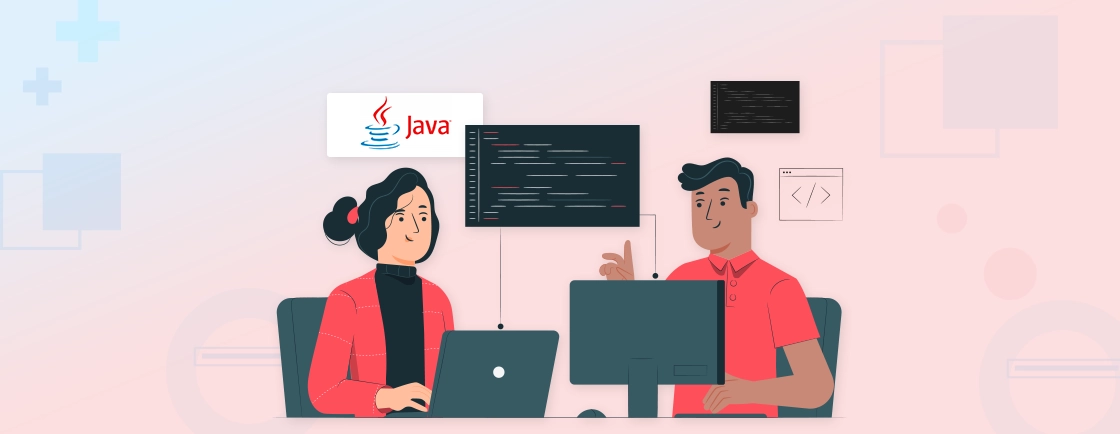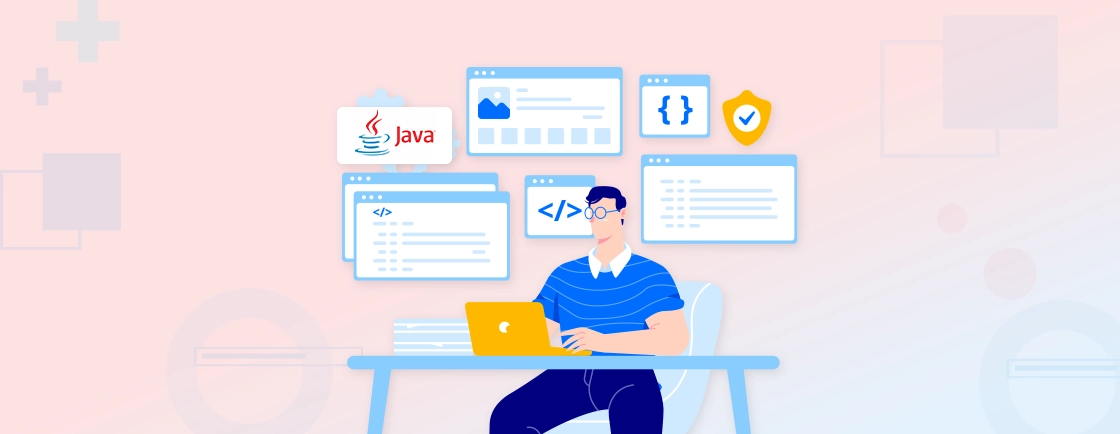Table of Contents
Imagine deploying a Java application that automatically scales with demand. That is, without provisioning servers or worrying about downtime. Serverless Java makes this possible. So the developers can focus on code while cloud providers handle the rest.
Platforms like AWS Lambda, Google Cloud Functions, or Azure Functions, can help Java applications run efficiently in event-driven environments. That is, without operational overhead or costs. Serverless Java offers agility and scalability for microservices, APIs, and data processing, perfect for enterprise development.
So, through this blog, I’ll explain what the serverless approach is and how the Java experts use it for maximizing performance. Let’s begin.
What is Serverless Computing?
As the term suggests, in serverless computing, developers build and run applications without managing servers. Instead, cloud providers like AWS, Google Cloud, and Microsoft Azure handle everything. Cloud providers take care of infrastructure, like scaling, patching, and load balancing. All you, as a developer, have to do is write code and deploy response functions.
While the name suggests otherwise, servers still exist; but without the complexities. You pay only for the compute time consumed, making serverless cost-efficient for sporadic workloads.
Benefits of Using Serverless Java
Serverless Java combines the robustness of a mature programming language with the agility of cloud-native architecture. Here’s why enterprises and developers are adopting it:
- Reduced Operational Overhead: No server management means no patching, scaling, or downtime handling—just deploy code and let the cloud provider manage execution.
- Automatic Scaling: Applications instantly scale up or down based on demand, eliminating over-provisioning and wasted resources.
- Cost Efficiency: Pay-per-execution pricing means you only incur costs when your functions run, ideal for variable or low-traffic workloads.
- Faster Time-to-Market: Focus on business logic rather than infrastructure, accelerating development cycles.
- Event-driven Flexibility: Seamlessly integrate with cloud services (databases, APIs, queues) to build reactive, modular systems.
Yes, there are some trade-offs, like cold starts and vendor dependencies. But still, platforms like GraalVM can help maximize the performance.
How Does Serverless Java Work?
Serverless Java lets developers run code without managing servers—but how does it actually execute? Here’s a breakdown of the process:
Function Deployment
You package Java code (e.g., a Spring Boot app or a simple function) into a deployable unit (JAR or container). The cloud provider (AWS Lambda, Azure Functions, etc.) hosts this function, abstracting away the underlying infrastructure.
Event-driven Execution
Functions trigger in response to events—an HTTP request, a file upload, a database update, or a scheduled task. Example: An API Gateway call invokes a Java function to process a user request.
Stateless & Ephemeral Runtime
Each invocation spins up an isolated, short-lived environment. No persistent server—state must be stored externally (e.g., databases, caches).
Automatic Scaling & Resource Allocation
The cloud provider dynamically allocates CPU/memory per request. Concurrent executions scale horizontally without manual intervention.
Behind the scenes, cloud providers use lightweight containers or microVMs to isolate functions. And tools like GraalVM Native Image reduce startup time by compiling Java ahead of time (AOT).
Popular Serverless Java Platforms
Several cloud providers offer serverless computing solutions that support Java. Each platform comes with unique features, deployment options, and integration capabilities.
AWS Lambda
One of the most widely used serverless services, AWS Lambda allows developers to run Java functions in a fully managed environment. It integrates seamlessly with other AWS services like API Gateway, S3, and DynamoDB.
Key Features
- Tight integration with AWS services (S3, DynamoDB, API Gateway).
- Provisioned Concurrency to minimize cold starts.
- Pay-per-millisecond billing.
Best for: Event-driven microservices, APIs, and high-scale workloads.
Google Cloud Functions
Designed for event-driven applications, this service supports Java and works well with Google Cloud products such as Pub/Sub and Firebase.
Key Features
- Longer execution time limits (60+ minutes).
- Direct Pub/Sub, Firestore, and BigQuery triggers.
- Improved cold start performance.
Best for: Cloud-native apps with GCP integrations.
Azure Functions
Microsoft’s serverless platform enables Java developers to build and deploy applications with deep integration into Azure services like Cosmos DB and Event Grid.
Key Features
- Durable Functions for stateful workflows
- Native Kubernetes integration (Azure Arc)
- Visual Studio Code debugging support
Best for: Enterprise integrations and hybrid cloud scenarios
Our expert Java developers choose from these platforms according to pricing, integration needs, ecosystem compatibility, etc. We ensure the benefits are leveraged for the Java projects countering the challenges effectively. As a leading Java Development Company, we help businesses select the right serverless platform, integrate it seamlessly, and ensure optimal performance from day one.
How to Set Up Serverless Java?
Deploying a Java function in a serverless environment requires a structured approach. Traditional applications that run on dedicated servers. But serverless Java functions are executed on demand, responding to specific events.
It involves writing the code, packaging it correctly, and deploying it to a cloud provider. Let’s look at the simple step-by-step process:
Install Required Tools
Ensure you have:
- Java JDK 11+ (Amazon Corretto, OpenJDK)
- Apache Maven or Gradle (for dependency management)
- AWS CLI (for deployment)
- AWS SAM CLI (optional, for local testing)
Create a Simple Java Function That Prints “Hello, Serverless Java!”
Create a basic Lambda function using the AWS SDK for Java:
Step 1: Initialize a Maven project:
mvn archetype:generate -DgroupId=com.example -DartifactId=serverless-java -DarchetypeArtifactId=maven-archetype-quickstart -DinteractiveMode=false
Step 2: Add AWS Lambda dependency (pom.xml):
<dependency>
<groupId>com.amazonaws</groupId>
<artifactId>aws-lambda-java-core</artifactId>
<version>1.2.2</version>
</dependency>
Step 3: Write a handler class (src/main/java/HelloWorld.java):
package com.example;
import com.amazonaws.services.lambda.runtime.Context;
import com.amazonaws.services.lambda.runtime.RequestHandler;
public class HelloLambda {
public String handleRequest(String name) {
return "Hello, " + name + "! Welcome to Serverless Java.";
}
}
Package and Deploy the Function
Here’s how this part of the process goes.
Step 1: Build the JAR with Maven
mvn clean package shade:shade
Step 2: Deploy to AWS Lambda:
- Go to AWS Console → Lambda → Create Function.
- Select Java 17 runtime.
- Upload the JAR (target/serverless-java-1.0-SNAPSHOT.jar).
- Set the handler name: com.example.HelloWorld::handleRequest.
Step 3: Test the function:
- Use the AWS Console’s Test tab with a sample input (“World”).
- Expected output: “Hello, World!”.
Now, whenever a request is sent, AWS Lambda will execute the Java function and return the response.
Once the function is deployed, it can be triggered by various events, such as HTTP requests, database updates, or scheduled jobs. Proper monitoring and optimization help maintain efficiency, ensuring that the function runs smoothly while keeping costs under control.
Common Challenges with Serverless Java
Running Java in a serverless environment comes with its own set of hurdles. Addressing these challenges requires a mix of best practices, tools, and tactics to ensure smooth and efficient execution.
Cold Start Latency
Serverless Java suffers from cold starts—delays when initializing the JVM. Heavy frameworks (Spring) worsen this, but tools like GraalVM Native Image help reduce boot time.
Solution
- Use GraalVM Native Image to compile Java ahead-of-time (AOT).
- Enable Provisioned Concurrency (AWS Lambda) to keep instances warm.
- Opt for lightweight frameworks (Quarkus, Micronaut) over Spring Boot for faster boot.
Limited Execution Time
Most serverless platforms enforce strict time limits (e.g., 15 minutes on AWS Lambda). Long-running Java processes may require refactoring or hybrid architectures.
Solution
- Break long tasks into smaller, chained functions.
- Use AWS Step Functions for orchestration.
- For batch jobs, consider Google Cloud Run (60+ minute limit).
Debugging & Monitoring Complexity
Traditional Java debugging tools (remote debuggers) don’t work well in serverless. Distributed tracing (AWS X-Ray) and structured logging are essential for troubleshooting.
Solution
- Use AWS X-Ray or Datadog for distributed tracing.
- Local testing: SAM CLI (AWS) or Azure Functions Core Tools.
- Structured logging (JSON logs) with CloudWatch or ELK Stack.
Overcoming these challenges makes serverless Java a viable option for scalable applications. For doing so effectively, consult with our professional Java development company.
Let’s Conclude
Serverless Java helps build scalable applications without the burden of server management. With cloud platforms, developers can focus on writing efficient code. They can benefit from automatic scaling, cost savings, and reduced operational complexity.
There are challenges like cold starts and debugging. But you can enhance the performance with modern frameworks and optimizations. With the growth of cloud adoption, serverless computing will play a bigger role in app development. If you are looking to build cloud-ready, scalable applications, you can Hire Java Developers from our expert team to design, deploy, and maintain robust serverless architectures that align with your business goals.
FAQs on Serverless Java
Is Java a good choice for serverless?
Yes, but with caveats. Java’s strong ecosystem (Spring, Quarkus) is useful, but cold starts can be slower than Node.js/Python. Optimizations like GraalVM Native Image help.
Can I run Spring Boot serverless?
Yes, but it’s not ideal due to slow startup. Consider Spring Cloud Function or switch to Quarkus/Micronaut for better serverless performance.
Is serverless Java cost-effective?
For sporadic workloads, yes (pay-per-use). For constant high traffic, traditional containers may be cheaper. Monitor costs with cloud provider tools.
Can serverless Java connect to databases?
Yes, but use connection pooling carefully (functions are stateless). Consider serverless databases (AWS Aurora Serverless, Firestore) for auto-scaling.
Strengthen Your Java Solutions
Dive into comprehensive tutorials and best practices to enhance your Java development skills.





